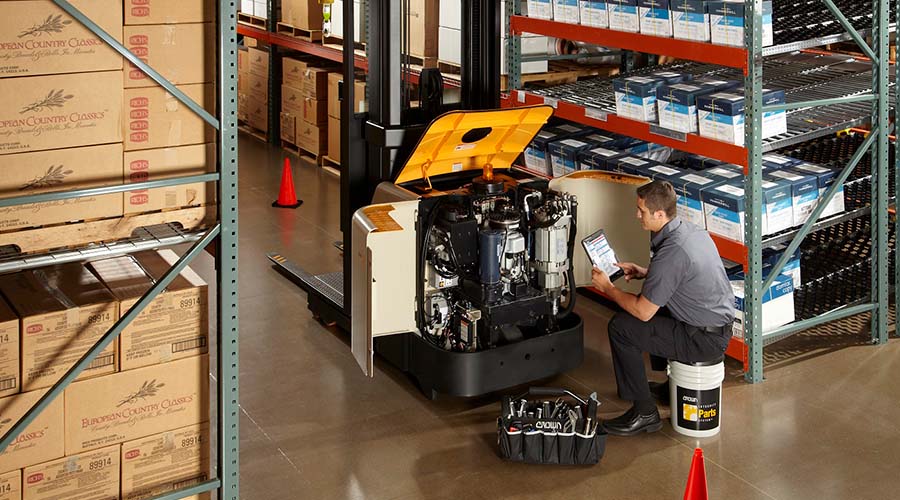The Connected Forklift Service Technician

The Internet of Things (IoT) is transforming the way we interact with machines, data, and each other, bringing a new level of connectivity to forklift service calls. Today’s connected service technicians, armed with new technology and increased connectivity, are making forklift service calls smarter and more proactive.
Ideally, as more data is gathered on forklift performance and operation, the connected service techs can arrive onsite before fleet managers or operators know there is an issue with the forklift. In certain cases, they can show up already understanding the issue, with the right parts for the repair. They can also use connected tools, such as mobile tablets, to walk through the steps to fix the issue and then upload the service call data to the service cloud to inform fleet managers of the repair and strengthen the service data pool.
To ensure you are prepared and capable of realizing the benefits of greater connectivity, there are a few steps you need to take.
1. Find the right partner
Identify the right partner to help you create a connected service tech experience that achieves your goals. This can include your forklift manufacturer, the dealer managing your maintenance and service program, or the technology provider behind your operator and fleet management system.
2. Make the connection
Giving your techs laptops and tablets is only a start. You need to connect your assets/forklifts through a forklift fleet and operator management system that gathers operator and forklift performance data. This helps create a channel for vital forklift information to be gathered and shared with service techs.
3. Monitor and analyze
Manage and use the data being gathered, including event codes, operator performance, and forklift health and utilization information. The right processes, algorithms, and forklift OEM vendor can analyze that data so actionable information can be shared with service techs to accurately and efficiently address issues.
For instance, if an internal combustion forklift is overheating, an alarm with information about the top causes (based on historical data) is sent to the dealer service dispatcher through the OEM’s service cloud. The dispatcher then sends a service tech, based on availability and on-hand replacement parts. When the tech determines the water pump is the issue, that information is added to the data pool associated with overheating. The probability percentage for the water pump increases slightly for future overheating alarms.
4. Automate and Integrate
Ensure system integration so that information is shared with all relevant groups who have a role in your service and maintenance program. This is especially important if your OEM dealer maintenance provider uses their own, separate business system to manage and dispatch service calls. Ideally, alerts are automatically sent to your dealer and relevant information is shared with techs.
5. Predict and Innovate
Use the infrastructure and collected data to transition from a reactive service and maintenance program to a predictive one. This means using historical data to diagnose issues before techs arrive. The data help you understand utilization and schedule regular service and maintenance to anticipate and eliminate potential issues. You can also create a proactive planned replacement product life cycle formula unique to your organization.
As forklifts become more connected, service techs need to keep pace. Creating a connected experience can empower the service tech to help reduce maintenance costs and achieve your uptime goals.